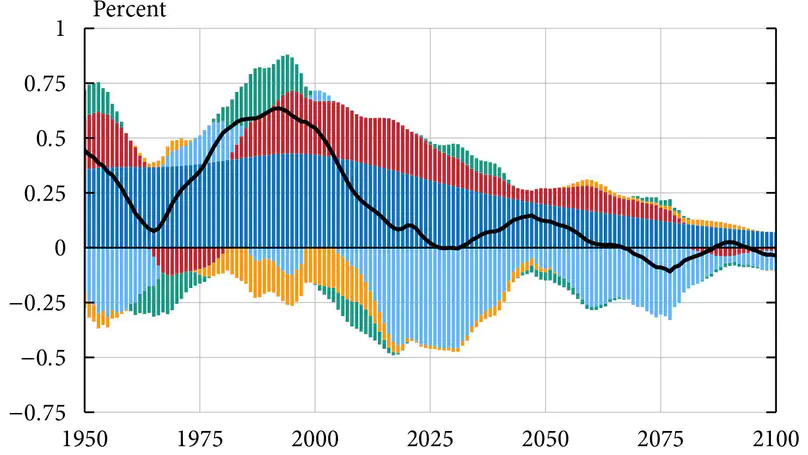Welcome!
I am a macroeconomist and a postdoctoral researcher at the Department of Economics at Stockholm University. I hold a PhD in economics from the Stockholm School of Economics.
My research focuses on how heterogeneity at the household level interacts with outcomes at the macroeconomic level. My current work investigates how changes in the cost of living differ across households with different consumption patterns (and how to measure these) and the impact of demographic change on economic growth and output per capita.
You can find my CV here.
- Macroeconomics
- Demographic change
- Growth
- Inflation
PhD in Economics, 2023
Stockholm School of Economics
MSc in Economics, 2018
Stockholm School of Economics
BSc in Mathematics, 2019
Stockholm University
BSc in Economics, 2016
University College London, U. of London
Latest paper

Does population ageing hurt output per capita in the advanced economies? Standard calibrations of life-cycle models with exogenous growth that consider two fundamental and opposing forces, capital deepening versus a declining employment rate, predict yes. Using a quantitative overlapping generations model with realistic demographics and R&D-driven endogenous growth, this paper challenges the standard prediction through a third possibility: that current demographic trends boost R&D investment and thus generate technological change. Calibrated to the United States, the model indicates that the demographic transition between 1950 and 2100 increases output per capita by 0.41 percent per year until 2000 and by 0.18 percent per year overall, thereby explaining 10 to 20 percent of observed US growth. The key mechanism is the endogeneity of technological change, whose growth contribution triples that of capital deepening, and removing this channel eliminates the positive impact.
Contact
- markus.pettersson@su.se
- +46 (0)708 36 29 18
- Universitetsvägen 10A, SE-114 18 Stockholm, Sweden